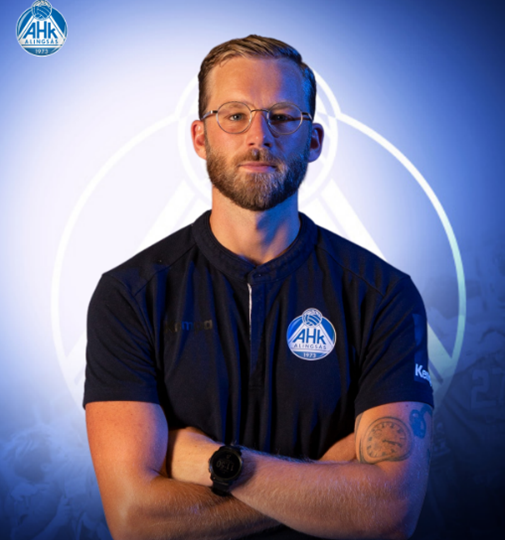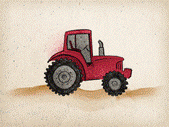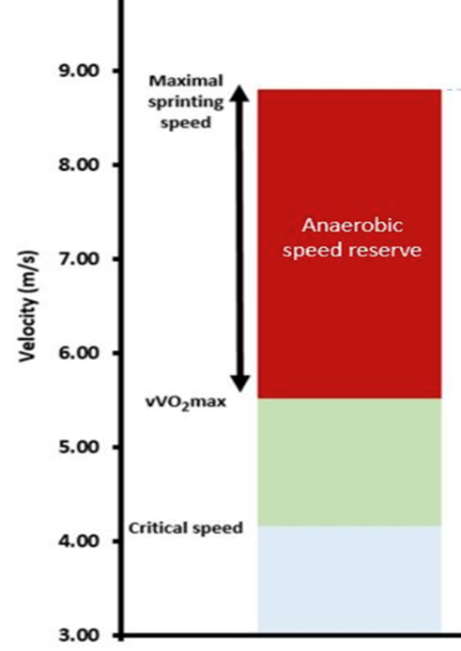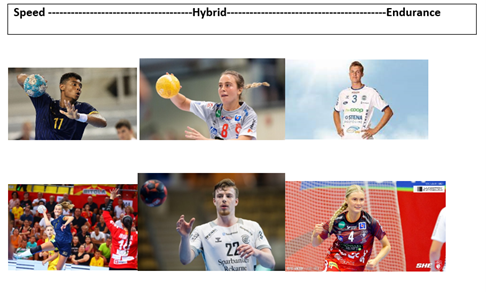“Endurance development for handball – A different approach”

Introduction
The S&C role in handball has evolved during recent years from first being some external person who were hired for one day and later judged how well they made people tired and puked, to the nowadays ”one size fits all mentality”, where everybody does the same intervals – at unknown intensities.
But there is a need for a more individual approach. It is now required that the S&C coach has a broader knowledge about injury prevention, program design and how to manage load while having a basic understanding of the tactics of the game.
In order to better prepare players for the demands of the game, it is important that the S&C coach considerates the physical abilities of the team in relation to activity profiles and tactical approach during games.
At top level, do all type of players need similiar type and amount of conditioning training, independent of their role, court position and physical profile?
Requirements for performance in team handball
Handball is an intermittent sport which includes actions like jumping, sprinting, accelerations and decelerations. During match acitvities players run at different distances (1-5 km) at a mean intensity close to 80-90 % of heart rate with more than 120 high intensity actions among elite players (Buchheit, 2018; Font et al, 2021;2022).
The ability to repeatedly do sprints with high quality and short recovery time is fundamental despite the fact that the game consists of 75% walking at low intensity activities. This makes the game highly anaerobic in nature!
It is worth noting that the physical profiles differ between playing positions, also influencing training loads. In recent studies it is notable, that wings cover a lot more high speed runs compared to other positions, who have a higher value in playerload.
In contrast pivots have a larger number in contacts, compared to the others but still have a significant higher playerload compared to wings. (Cardinale et al 2017; Manchado et al 2020, 2021; Unpublished data from Sweden Euro 2022).
Thus, body dimensions are also relevant since there is a huge difference between positions as they can alter training loads and demands. (Ghobadi et al, 2013; Kercher & Buchheit, 2014; Ferrari et al, 2019; Font et al 2021)
Despite this differences among player positions there still exists ”one size fits all” concept within elite environment. These differences add disparity to the training response, making training individualization necessary when we design endurance programs.
“The ability to repeatedly do sprints with high quality and short recovery time is fundamental despite the fact that the game consists of 75% walking at low intensity activities. This makes the game highly anaerobic in nature!
Anaerobic speed reserve – What is it?
Players can have different conditioning profiles. Some of them have a bigger amount of fast twitch fibers (2x, 2A) and relying more often on their anaerobic abilities. These players (ferraris) are often fast and explosive in nature but lack endurance abilities for continuous work over time. The other side of the continuum is players with a large amount of slow but enduring fibers (type 1) that can run at a medium pace for a longer time. These players (tractors) uses at a higher degree their aerobic abilities and find it hard to use fast actions. But they can handle a greater amount of volume in training compared to the players with fast twitch fibrers. Somewhere in between are our hybrids, which are a mix of the two types. According to Sandford et al (2021, 2020) is probably most of team sport players hybrids.


The anaerobic speed reserve (ASR) is a description of the specific conditioning profile of a player, consisting of the maximal aerobic speed and the maximal sprinting speed. ASR is the size of players ”turbo” (red colour) when they have reached their MAS or vVo2max. (Sandford et al 2021; Buchheit & Laursen, 2013a;b)
Maximal aerobic speed (MAS) is quite simply the minimal running velocity at which V02 max occurs – otherwise known as the velocity at V02 max (vV02 max). In other words, it is the lowest speed at which maximum oxygen uptake (V02 max) occurrs. For example, as an athlete can continue running, and even run faster even though they have already achieved their V02 max, MAS is then simply the ‘slowest’ speed an athlete will achieve their V02 max. After that, the ”turbo” kicks in!
Critical speed (CS) is the last speed you can sustain for a long time which means that running faster than CS represents a shift from steady to non-state physiology. It’s an marker for aerobic fitness and for team sport athletes that is approximately 75-80% of MAS. Its very important to make clear that this is model for how to optimize aerobic development with regards to conditioning profile.
The specific demands on court will be – at a general level – decisive for the profiles which will reach top level. In order to evaluate the overall conditioning ability of the players, we should use a framework that takes into account both the maximum sprinting speed and the maximum aerobic speed.

Is it possible to solely use MAS to describe effective conditioning?
MAS works well around MAS but could miss important qualities were you instead want to use your ASR.
The quick answer is therefore ”it depends”. If we program short intervals >105 % of MAS it would be different loads for different players given their ASR and therefore not optimal.
In turn, we have a reverse effect if we instead program long intervals with <105% of MAS. The lower the intensity from <105%, the more accurate is the MAS and vice versa for ASR.
So, when we are doing testing with our team sport athletes for aerobic purposes, then yes MAS is the thing we measure but we are using that for three purposes.
1. to prescribe sessions around MAS
2. to understand where approximately that CS is going to sit underneath it and
3. to evaluate MSS in order to understand the size of ASR and program interals at intensities > 105% of MAS.
And then we can use all of these together as optimal training zone stimulus with our athletes.
In summary, when evaluating players, ask yourself what would benefit each player most. The muscle type should dictate which type of format you use, level of intensity and the total volume of the session.
How do I test it? Make your own conditioning card
The easiest way to evaluate maximal sprinting speed for team sport athletes is to analyze the fastest 10 meter time between 20-30 meters. Then you compare it with a classic time trial of approximately 6 minutes on a track or in the worst case scenario on a treadmill.
If you have a larger group of athletes, its easier to just make them run a specific distance for 1600-2000m. After both tests are finished, you can put together everything in a spreadsheet which automatically calculates your individual intervals. Mladen Jovanovic (Jovanovic, 2018) and Martin Buchheit (Buchheit & Laursen, 2018) are two excellent resources that you can find out more on how to use the specific equations.

Do you recognize players who perform bad on aerobic tests but still manage to play a whole game?
Handball has an intermittent and anaerobic character interspersed with long rest intervals. It is therefore obvious that the anaerobic speed reserve could be the explenation behind why players still can manage to play a whole game even though they perform really bad on aerobic testing. (E.g Cooper or Vo2max)But the need for aerobic abilities cannot be underestimated either. They play a vital role in the recovery phase, but only to a certain level (Buchheit, 2018; Buchheit & Laursen, 2018). Since the game schedule of team handball sometimes is insane, it is not uncommon that a team in international championships can play 9 games in 14 days! In that type of context the aerobic abilities are much more important and this is why we still need to have a solid aerobic base.
” Since the game schedule of team handball sometimes is insane, it is not uncommon that a team in international championships can play 9 games in 14 days! In that type of context the aerobic abilities are much more important and this is why we still need to have a solid aerobic base.
Find a useful map and embrace the chaotic enviroment
“There are just the ones with lab coats who think they can find the perfect system.
Jovanovic (2018)
The ultimate goal for S&C coaches is to develop a concept that will solve our problems.
But in most cases, we all know that this is a lifelong and probably endless task. Or as Jovanovic (2018) said it with this accurate quote: ”There are just the ones with lab coats who think they can find the perfect system.”
We all need to find a system that is ”quite good enough” and fit our context (e.g experience, culture, gender or age). Then we will have to embrace the chaotic nature of elite enviroment and further on accept that even if you wrote the best program of the world it is still not directly transfered to the performance on the court.
Our job is to prepare for worst case scenario and be part of the whole puzzle.
The future of endurance in handball
In recent years we have watched some new rules that have been groundbraking for our sport, especially this season (22-23) where the throw off is now possible in a bigger area.
I assume that the increased speed of the game will force the players to become more hybrid, in a way of doing ”a little bit of everything”.
The classic “role player” will over time disappear, since teams will have limited time to make offensive and defensive substitutions.
In my opinion it is therefore highly recommended that S&C coaches considerate and evaluate the ASR because:
- Increases the overall efficiency of endurance development among players.
- Takes into account the muscle type of the players (e.g load tolerance)
- Train similiar to specific game demands: Inlcuding the velocity of the game and speed above vVo2max (Cardinale et al 2017; Manchado et al 2021, 2022).
What do you think?
Pontus Axell, S&C Coach Alingsås HK | Advisor Physical Preparation Youth Teams at Svenska Handbollförbundet
Who is Who
Pontus Axell is a 31 year old former handballplayer and geek in sport science. He is currently living his dream as a S&C coach for Alingsås HK in Handbollsligan and combines it with the Swedish handball federation youth teams (U16-U21). He is based in Gothenburg, Sweden, together with his wife and two lovely daughters.
If you have any thoughts about his posts, how he programs conditioning after ASR or want to connect with him you can find him on Twitter, Instagram and Linkedin.
